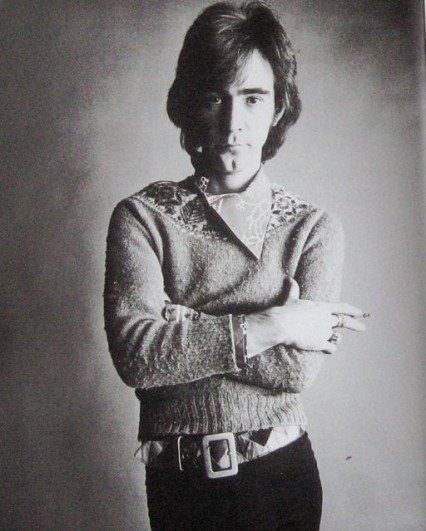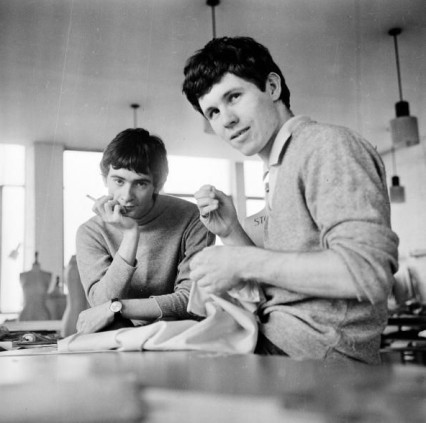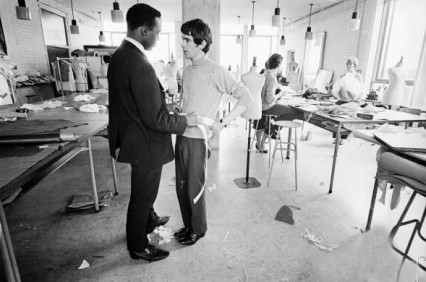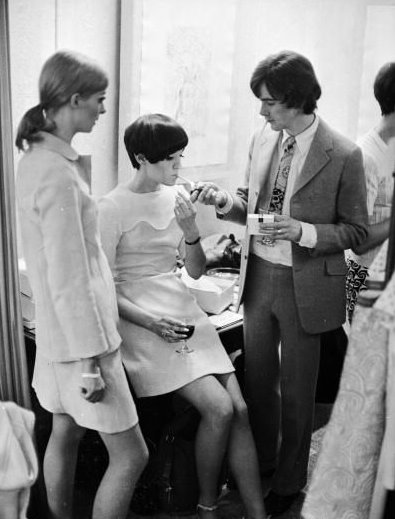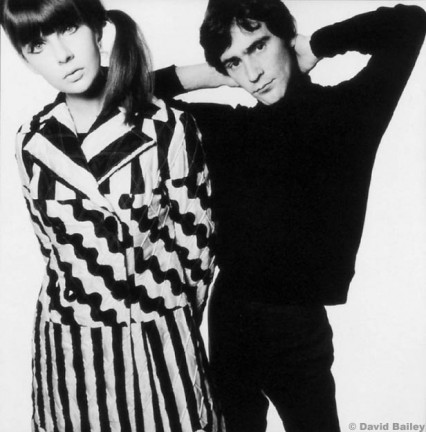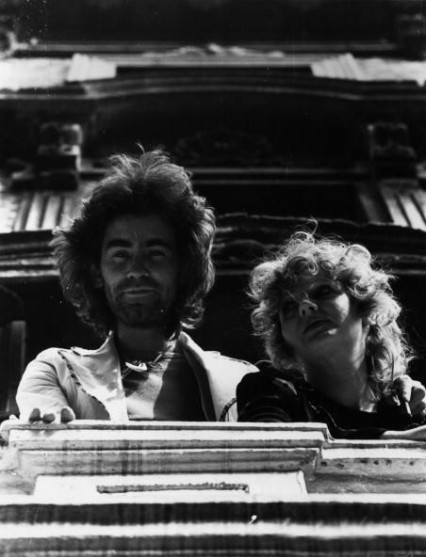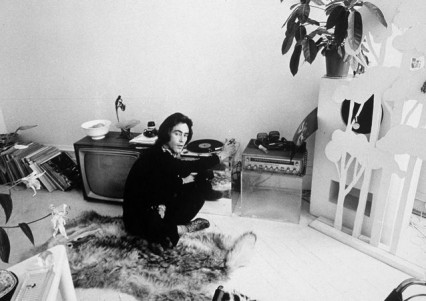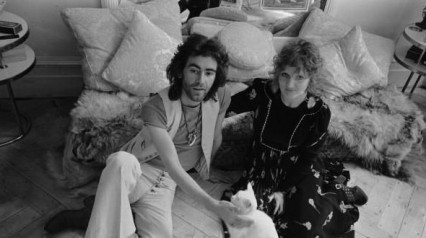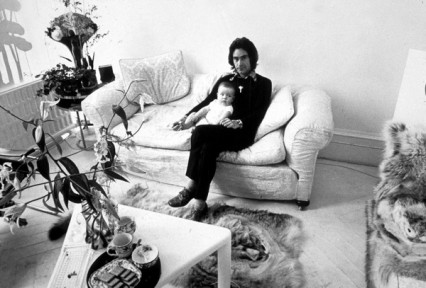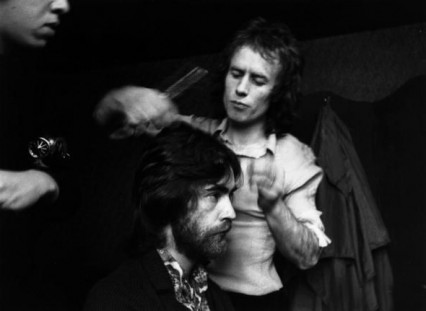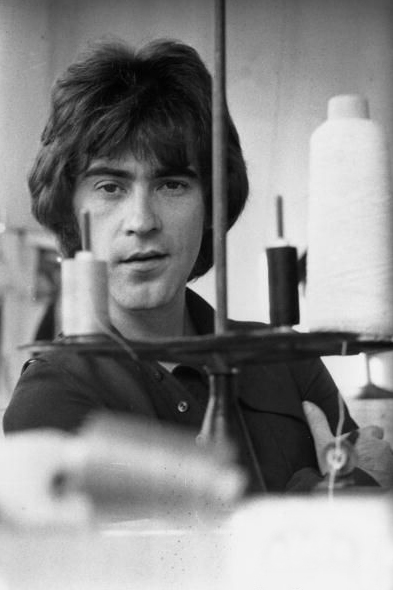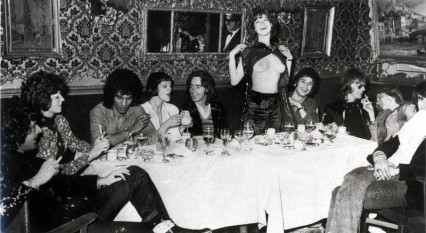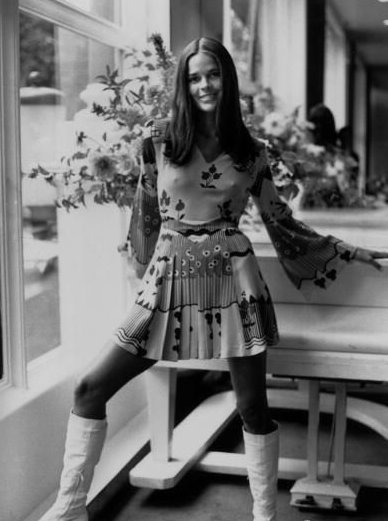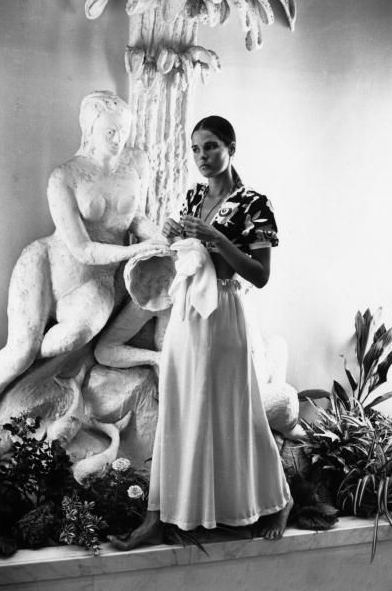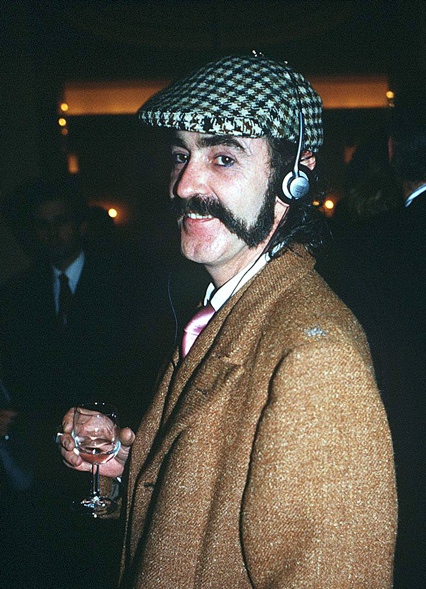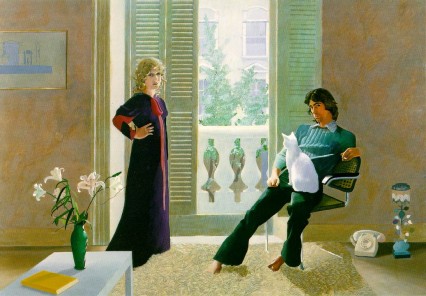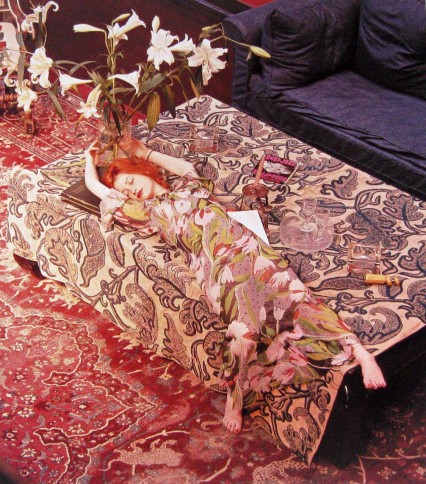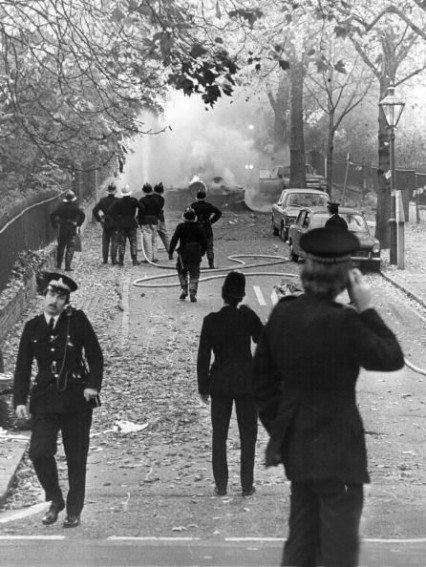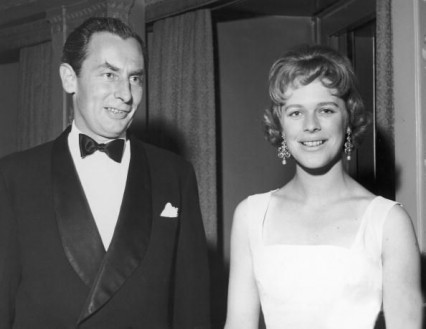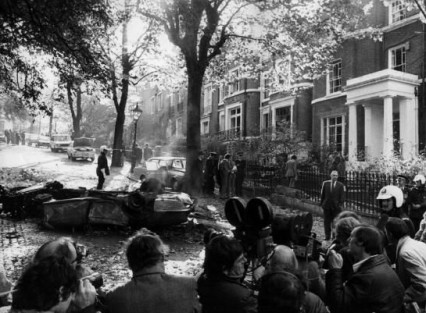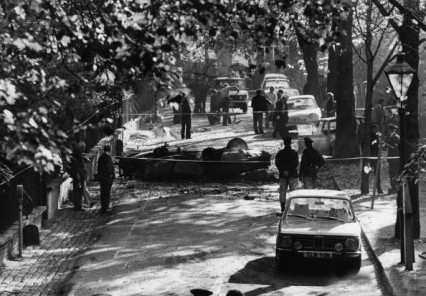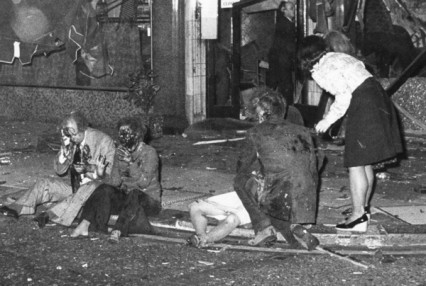In 1995 Ossie Clark, the iconic sixties and seventies fashion designer known for his flowing dresses and a rather excessive party lifestyle, invited the 27 year old Italian Diego Cogalato to move into his one-bedroomed Holland Park council flat in Penzance Street. Just eighteen months later, Cogalato called 999 and said to the operator ‘I think I’ve killed someone…’.
When the the police broke into the flat they found Ossie Clark on the floor with 37 stab wounds to his body and with his head completely stoved in, apparently by a large terracotta pot.
At the trial Coglato’s defence revealed that at the time of the murder he had been high on a mixture of Prozac and amphetamines – a combination of drugs that caused him to see himself as the New Messiah. Unfortunately they also caused Coglato to see Ossie Clark as a devil. A devil that needed to be extinguished. Coglato was convicted of murder but given just a six-year sentence on the grounds of diminished responsibility.
By the time he died, Ossie Clark was an unkempt and sad figure often wandering around Holland Park near his flat. He had become a buddhist and apparently prayed everyday in front of a shrine made entirely of empty packets of Sobranie cigarettes. His carpet was just brown cutting paper and his goldfish were kept in vases. He was so poor that he was occasionally seen scouring the streets for dog-ends to smoke and even fished pennies out of the fountain in Holland Park.
Just thirty years earlier, and ultimately to become one of Britain’s greatest fashion designers, Ossie Clark was at the beginning of his glittering career. In 1962 Ossie Clark moved to London to enrol at the Fashion Design School at The Royal College of Art. He graduated in June 1965, with a first class degree and a collection inspired by artist Bridget Riley.
Clark was an immediate success and he’d hardly graduated when Vogue magazine wrote about him as a major new talent and photographer David Bailey was hired to take his portrait.
Clark began to sell both his couture and ready-to-wear lines in the Chelsea boutique, Quorum with his friend and business partner Alice Pollock. Incidentally David Gilmore, later of Pink Floyd was a driver for Quorum for a while and later would provide a lot of music for Clark’s innovative fashion shows.
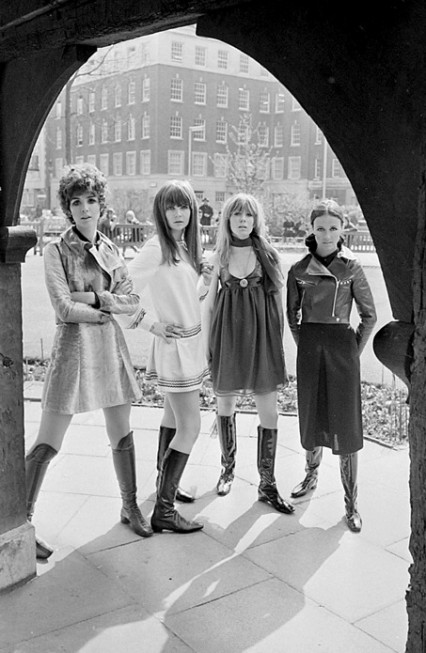
Linda Keith, Chrissie Shrimpton, Suki Poitier and Annie Sabroux displaying the Ossie Clark and Alice Pollock winter collection April 1967
Part of the success of Clark’s clothes at the time was due to the extraordinary collaboration with his wife, the textile designer Celia Birtwell. Many of Clark’s more famous garments were designed around her fabrics.
Clark had met Birtwell while they were both students in Manchester and although he was sexually attracted to men they became lovers, marrying in 1969 when she was pregnant with their first child. David Hockney, friend of the couple and sometime lover of Ossie, was the best man.
The marriage only lasted a few years – towards the end of the marriage Birtwell could no longer put up with Clark’s wild-partying, drug-taking and his many affairs with both men and women. She eventually had had enough and started an affair with the artist Adrian George, leaving Ossie for good in 1974.
David Hockney’s famous painting ‘Mr And Mrs Clark And Percy’ was given to the couple as a wedding present. Ossie, later in his life and needing the money, sold it to the Tate Gallery for just seven thousand pounds. It is now one of (if not the) most famous British painting and worth millions. Clark was always, despite his success, a very bad businessman.
During the decade before the separation however, Ossie Clark was the star of British fashion – even describing himself as a “brilliant butterfly”. He was particularly famous for his bias cut dresses and brilliant tailoring.
He had an incredible eye for the female form and thus created incredibly flattering clothes – it was said that he could cut a dress to fit a woman perfectly just be running his hands over her body. Marianne Faithful described trying on one of his dresses for the first time when she was eighteen -
“Ossie wanted everything to be on bare skin, so he said ‘Take it all off’ – and I did – the display was heart-tugging.”
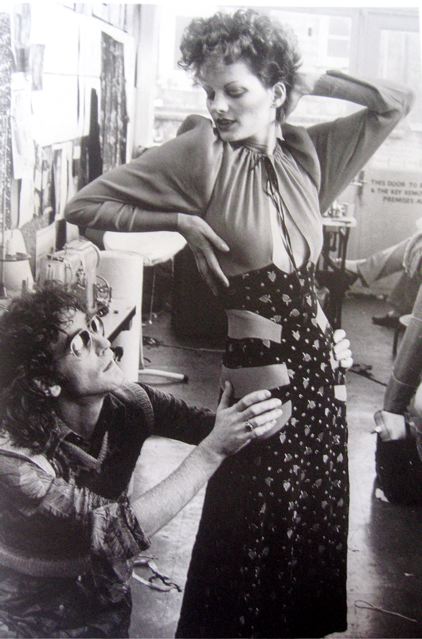
Ossie with Gala Mitchell his favourite model. 'It's all in my brain and fingers' he once said, 'I am a master cutter.'
By the early seventies Clark was at the height of his fame – his dresses were worn by the the most beautiful and famous women of the era – Patti Boyd, Ali MacGraw, Twiggy, Jean Shrimpton, Elizabeth Tayor and Liza Minelli. He even designed some of Mick Jagger’s stage costumes including the famous white jumpsuit he wore on the 1973 Exile On Main Street tour. If he was visiting New York he would hang out with Andy Warhol, Diana Vreeland and Truman Capote. He probably thought that life couldn’t get much better.
After the separation with Celia, Clark never really recovered emotionally and professionally and although the first entry in his diary in 1974 read:
January 10. Moved into Powis Terrace. Dinner with Mick and Bianca. Took Mo to cheer him up. After, Paul Getty Jr with Nikki Weymouth, Chrissy, Robert Fraser.
In the mid-seventies his fortunes went into a downward spiral, never a good business man, Clark now found his clothes decidedly unfashionable. The Kings Road was now enthralled with the punk revolution and its accompanying home-made fashion.
By 1983 Clark was declared bankrupt after the Inland Revenue claimed 14 years of back tax. He lost his house and had to live with friends until, eventually, the DHSS re-housed him in the small council flat in Penzance Street – the council flat where he was ultimately murdered.
Except for bits and bobs he never really worked properly again.
Ross McWhirter and the Balcombe Street gang
Sunday, April 20th, 2008On the 22nd October 1975, the very same day that the Guildford Four were wrongly convicted of a pub-bombing, a man telephoned the large Holland Park home of the Conservative MP Hugh Fraser and his wife, the author Antonia Fraser, and asked what time the MP left in the morning.
The cook, who had answered the telephone, innocently told the caller that it was usually around nine. During that night someone planted a bomb underneath one of the wheels of Fraser’s Jaguar XJ6 that always stood outside his house in Campden Hill Square.
The next morning Professor Gordon Hamilton-Fairley, a neighbour of the Frasers and an internationally renowned cancer specialist, was out walking his two dogs. He noticed a strange device underneath Fraser’s car and bent down to investigate. He accidentally activated the bomb’s ‘anti-handler’ micro-switch and, along with his two poodles Benny and Emmy Lou, he was killed instantly.
Had Jonathan Aitken not called at 8.45am that morning, delaying the departure of Fraser and his guest Caroline Kennedy (she was in London attending an art appreciation course at Sotheby’s), they would have died instead.
This bomb was only one of 40 explosions set off in the capital by the Provisional IRA in a 14 month bombing campaign over 1974-5. It left 35 people dead and many more injured. The IRA Active Service Unit that was responsible for the Professor’s death in Campden Hill Square was actually responsible for the bombings for which the Guildford Four were infamously tried and wrongly convicted.
Edward Butler, Hugh Doherty, Martin O’Connell and Harry Duggan were all in their early twenties and all from the Irish Republic (which meant that they were more difficult to trace by the British police).
After the Campden Hill Square mistake the ASU reverted their attention to prominent ‘ruling class’ restaurants such as the Trattoria Fiore in Mount Street, W1 which they bombed on the 30th October, injuring 17 people, and Walton’s restaurant in Walton Street in Chelsea where they killed two diners.
At this stage the inhabitants of London, if not panicking, were starting to think twice about going for something to eat in the West End and the restaurants were becoming virtually empty. At a news conference the right-wing Ross McWhirter, one of the twins who created the Guinness Book of Records, offered £50,000 for information leading to the arrest of the terrorists.
Not long after on the 27th of November Duggan and Doherty staked out McWhirter’s house and shot him with an Astra Magnum revolver when he answered the door expecting his wife. One of the gunmen said:
“He thought it was the Wild West. He put a price on our head. The man thought he was living in Texas”
By now the IRA ASU were acting as if it WAS the Wild West. They were seemingly able to drive round bombing and shooting at ‘ruling class’ restaurants and hotels at will.
However on the 6th December 1975 their luck ran out. The gang had stolen a blue Cortina and were spotted by an observant policeman who noticed that they were driving unnaturally slowly. Following them, he incredulously watched them brazenly open fire at the Mount Street restaurant they had attacked only a few weeks earlier.
Along with fellow officers who had heard his radio call, the policeman followed the four members of the ASU, now on foot after abandoning the car, to Balcombe Street near Marylebone Station. On the way, the gang and the police were now exchanging gunfire at each other with shocked members of the public diving out of the way.
Meanwhile at number 22b Balcombe Street, John and Sheila Matthews were watching an episode of Kojak both presuming, unsurprisingly, that the gun shots they could hear were coming from the television. Suddenly the gunmen burst in through the door and took the couple hostage, unfortunately Telly Savalas was nowhere to be found, and an epic six day siege had started.
“As volunteers in the IRA we have fought to free our oppressed nation from its bondage to British imperialism of which this court is an integralpart.”
“Gordon Hamilton-Fairley DM FRCP, first professor of medical oncology, 1930-75. Killed by a terrorist bomb. It matters not how a man dies but how he lives.”
